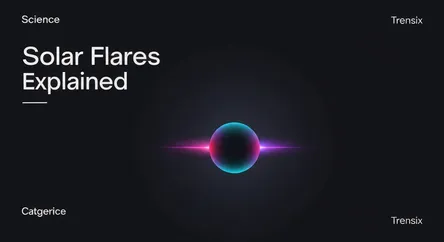Science
Solar Flares Explained

Discover what solar flares are, why these massive bursts of energy from the Sun are increasing, and how they can impact our technology on Earth.
What is it?
A solar flare is a tremendous explosion on the Sun's surface, releasing a massive burst of energy, light, and high-speed particles into space. These events occur when magnetic energy that has built up in the solar atmosphere is suddenly released. Flares are classified by their brightness in X-ray wavelengths, ranging from A-class (the smallest) to the most intense X-class. An X-class flare can release energy equivalent to a billion hydrogen bombs and can trigger spectacular phenomena across the solar system.
Why is it trending?
The Sun is approaching the peak of its roughly 11-year activity cycle, known as the solar maximum. During this period, solar flares and related events like Coronal Mass Ejections (CMEs) become significantly more frequent and powerful. Recent major flares have generated significant media coverage, highlighting their potential to disrupt modern technology and create stunning auroras visible in unexpected parts of the world, sparking widespread public and scientific interest.
How does it affect people?
While Earth's magnetic field protects us from harmful radiation, strong solar flares can seriously disrupt our technological infrastructure. They can interfere with high-frequency radio communications, degrade GPS signals, and induce currents that can overload power grids, leading to blackouts. Astronauts in orbit are also at risk from increased radiation. On a more positive note, the interaction of solar particles with our atmosphere creates breathtaking auroral displays (the Northern and Southern Lights).